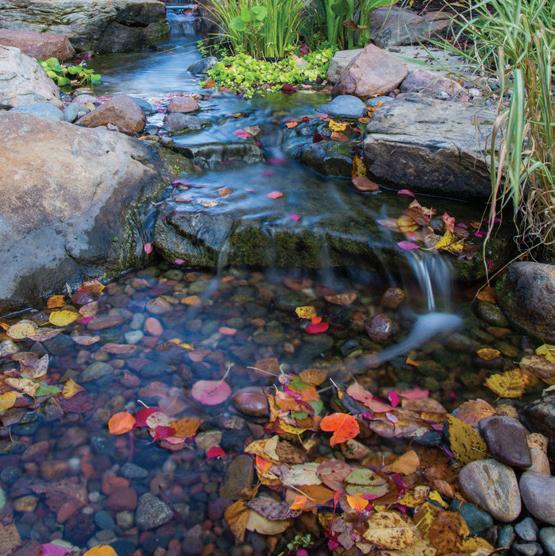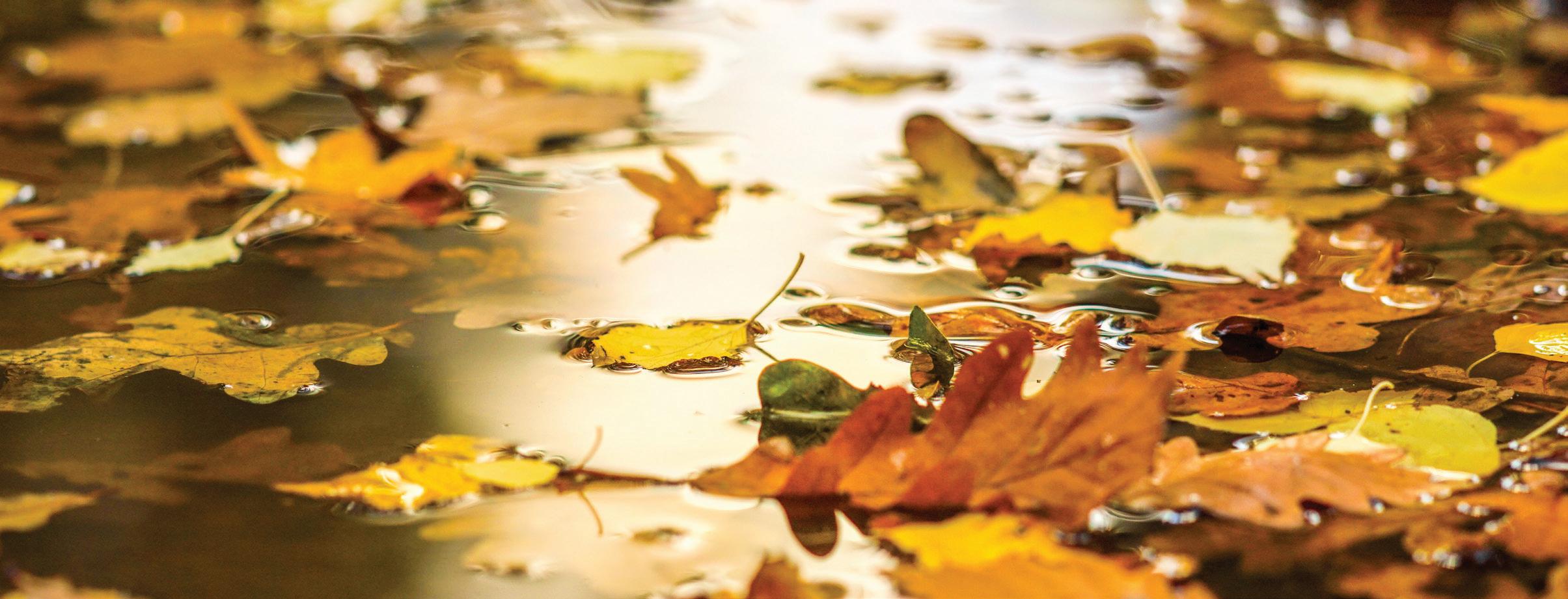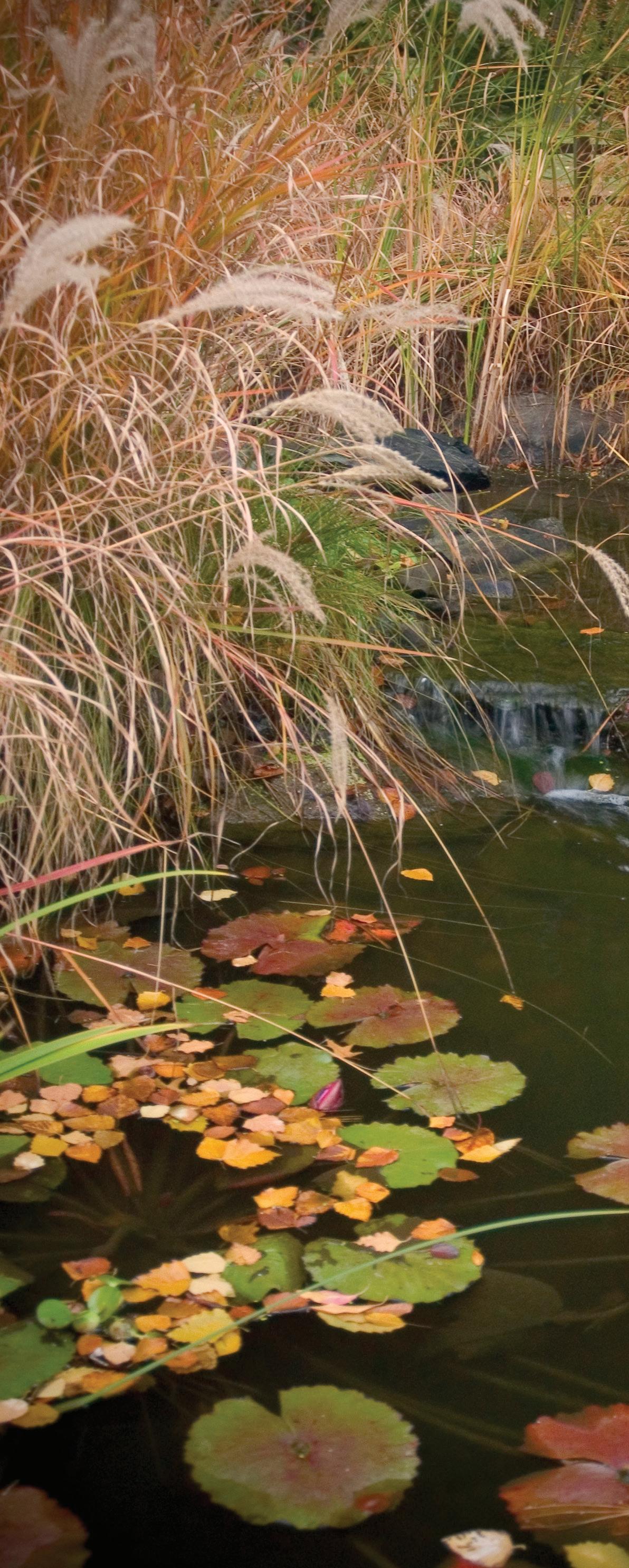
3 minute read
Why Is My Pond Water Brown?

Why Is My Pond Water Brown
Advertisement
Fall brings glorious color to the earth, but this beautiful season can add a tint of brown to your pond water that’s not so pretty. Before you panic and worry about your fish, find out why your pond turns brown and what you can do about it.

Brown water, better known as tea-colored water, is a common occurrence during the autumn season when trees and bushes lose their leaves. Leaves and other organic debris contain tannins and when left in the pond, this tannin is released into the water, creating a brown tint.
Brown water can also be created by an excessive build-up of debris on the pond floor. When leaves and debris aren’t removed, they sink to the bottom of the pond where they start to decay and turn into sludge. When the sludge is stirred up by fish, the water can take on a brownish tint.

Both debris tea (tea-colored water) and sludge can be cleared up rather easily, but you need to know which issue your pond is experiencing before you can properly treat the problem. This is where a small mason jar or other glass jar from your kitchen comes in handy.

Fill a small glass jar with your brown pond water and let it sit undisturbed for 24 hours. If sediment settles to the bottom of the jar, you’re dealing with a sludge or sediment problem. If the water is still tea-colored with no sediment, then you’re dealing with debris tea. Both issues are caused by an overabundance of organic matter in the pond, so you’ll want to remove any floating debris or organic matter at the bottom of the pond to keep brown water from recurring.
You can remove sludge from the bottom by hand (some pond owners enjoy any excuse to get in the pond), or you can apply a sludge-fighting water treatment such as Clean for Ponds, Pond Sludge Remover Packs, or Sludge & Filter Cleaner.
Tea-colored water can be treated with Clear for Ponds or Activated Pond Carbon which work quickly to remove discoloration.
Your best line of defense in combating brown pond water is to keep the problem from occurring in the first place. A mechanical pond skimmer is critical for sweeping your pond surface free of fallen leaves and sticks. Remember to check the skimmer basket more frequently during the fall season and empty it as needed. This just takes a few seconds out of your day.
You can also remove debris from the edges of the pond when you see it accumulating. Check the water surface around lily pads and floating aquatics like water lettuce and hyacinth. Errant leaves love to congregate in these areas and never reach your skimmer. Eventually the fallen leaves will sink to the bottom of the pond where they start the decaying process.
Fall is a wonderful time of year for enjoying your pond with its crisp bright days. A few minutes of your time is all it takes to ensure clean and healthy pond water. Remember Benjamin Franklin’s advice that “an ounce of prevention is worth a pound of cure” and you’ll greatly reduce the possibility of your pond water turning brown.


